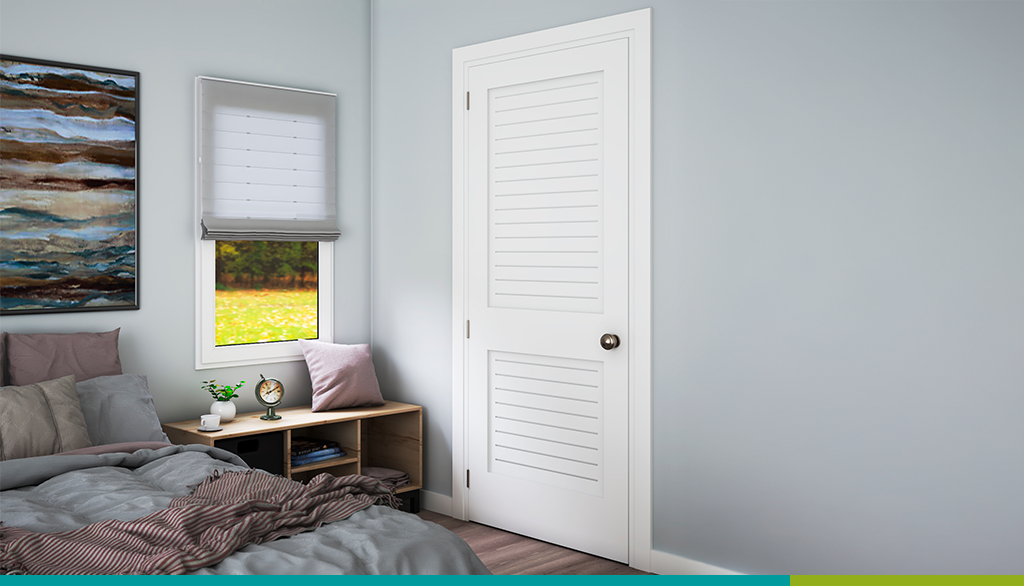A basic guide to make minor repairs on wooden doors.
Life happens, sometimes with more fervor than we would like. Our doors often take the brunt of the abuse in our homes. Be it from bumping into them with a pointy object, accidentally kicking them while trying to hold the door open or other shenanigans (if you have children or pets, you know what I mean), wooden doors are no strangers to surface damage.
There are a couple of simple repair and maintenance techniques that can be employed to keep your door looking as good as it did the day you bought it.
The most important preventative care can do is to ensure that the door you are purchasing comes with a warranty. Within the confines of a year, a reputable company will offer to;
1) Repair the door without charge;
2) Replace the door without charge or;
3) Refund the price paid for the door.
Hollow Core Doors
Holes
Because there is less interior resistance in a hollow core door, it is possible to make actual holes through the veneer. Small holes from nails are a much simpler fix than a hole larger than a quarter. A small hole can be filled with wood putty and gently sanded to maintain the same plane. A detailed explanation of how to do this follows in the “scratches” section of this article.
If you have a hole larger than a quarter, you will need to be willing to paint your door in order to hide the patch. To work on the door, you can either remove it, or spread a drop cloth on the floor beneath the door before you begin. All you need is a can of spray foam insulation, a utility knife, a spackle compound, a putty knife, some light sandpaper, a paintbrush, primer, and paint in the color of your choosing.
- Remove the door or lay down a drop cloth.
- Cut away any loose or jagged edges around the hole.
- Fill the hole with spray foam insulation. Fill it so much that it expands beyond the level of the door.
- Let it dry overnight.
- After it has dried, use a utility knife to shave off any excess foam. Shave it just slightly lower than the door’s surface.
- Apply the spackle to the patch using a putty knife. Make sure the putty is flush with the door’s surface. Allow it to try for 1-2 hours.
- Once the spackle is dry, sand the area lightly until it looks and feels flush with the original door.
- Prime the entire door and allow it to dry.
- Apply 1-2 coats of your favorite paint and enjoy your doors new look!
Scratches
Minor scratches can be treated in the same manner as tiny holes, with wood filler and light sanding. If the scratch is more of a gouge, it can be treated as though it were a large hole. All you need is some fine grit (320) sandpaper, wood filler and a putty knife.
- Gently sand the affected area.
- Apply a generous amount of wood filler to the scratch. Use a putty knife to spread the wood filler consistently over the scratched area to create a finish that is as smooth as the rest of the door.
- Allow the filler to dry (about 15-20 minutes, though you should follow the instructions on the wood filler for best results).
- Once the filler has dried, sand down the wood filler until it is flush with the door. Take great care not to flatten the surface of the door.
- If it does not feel smooth to the touch, you may need to reapply and resand the wood filler.
- With a damp cloth, wipe away any excess debris from the surface of the door.
- If the door was painted, you will want to repaint the formerly scratched section to help conceal the scratch.
Solid Wooden Doors

Holes
It is unlikely you will get a hole in a solid wooden door from daily wear and tear. Often, holes in solid wood doors occur from screws, mounting a decorative object or hardware like locks and handles. To repair a small hole in a solid wooden door, follow these instructions. You will need a drill, drill bit, a saw, a wooden dowel, wood glue and sandpaper.
- Drill a hole slightly larger than the existing hole.
- Use a dowel in the width of the hole you drilled that is a couple inches longer than the thickness of the door.
- Coat the dowel with glue prior to inserting it through the hole, allowing the dowel to stick out on either side of the hole (or one side if the hole does not go through the entirety of the door).
- Once the glue has dried, use a saw to cut the dowel flush with the door.
- Sand both sides of the dowel until the area is smooth.
- Paint or restain the entire door to maintain uniformity.
Large or irregular holes can be filled in with epoxy wood filler. Fill the hole with epoxy, but leave the surface a little concave. After the filler hardens, use spackle on the patch and scrape it flat with a putty knife. Once it is dry, prime and paint the patch to create a uniform look.
Scratches
Scratches in solid wooden doors can be treated in the same way as hollow-core doors.
With these simple steps, you can have your damaged door looking good as new with in a couple of hours! Before starting any of these repair projects, check to see if the company you bought the door from has a product warranty that covers minor damage.



